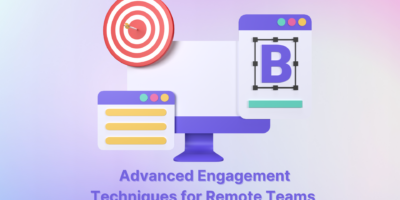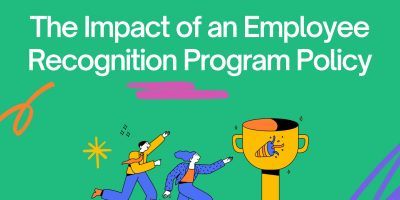
The Mentorship vs. Sponsorship Debate
Join the mentorship vs. sponsorship discussion – unveil their benefits and importance in the workplace and discover how they influence employees and organizations.

Mentorship and corporate sponsorship programs are invaluable assets in career development. But despite sounding somewhat similar, they are not the same thing. Jumping in on the mentorship vs. sponsorship debate to understand their impact should be the first step in their pursuit.
So, why should employees go for a mentor or a sponsor in the first place?
For starters, it gives a competitive edge in the workplace and helps employees pursue their career aspirations.
Chasing a career and climbing the corporate ladder requires hard work and a specific goal-getter mindset. Yet, more than sheer determination or academic accomplishments is required. It can even put workers at a disadvantage to peers seeking extra help from mentors or sponsors.
Mentorship statistics published in a Forbes article, “How Becoming A Mentor Can Boost Your Career,” revealed that participants in mentoring programs are more likely to get a promotion. Mentees, in particular, had five times higher chances of getting one than those who didn’t attend a mentoring program.
Yet, Gallup’s data show that only 40% of workers reported having a mentor in the workplace. That number is even lower for sponsorship at work (23%).
Additionally, a PayScale survey report, “Sponsors: Valuable Allies Not Everyone Has,” shows that employees with a sponsor, on average, get paid 11.6% more. This “sponsorship premium,” as PayScale calls it, was 12.3% for men and 10.2% for women.
Getting such opportunities is just one of the many reasons why finding a mentor or a sponsor is necessary.
Thus, in this Shortlister article, we join the mentorship vs. sponsorship discussion to explore the benefits of both. Using relevant data and analyzing these symbiotic relationships, we aim to unveil the importance of mentorship and sponsorship in the workplace and their effect on employees and organizations.
Moreover, we’ll discuss the differences between mentoring and sponsorship and try to answer which one is better for employees and why.

So, what is mentorship, and how do you define a mentor in the workplace?
The Merriam-Webster dictionary defines mentorship as “the influence, guidance, or direction given by a mentor.”
In a work setting, this refers to any situation where a more experienced employee (mentor) guides another (mentee) through their job responsibilities. Specifically, mentors help their mentees by giving them job advice, insights, and feedback.
When we hear the word mentorship, we almost always associate it with the age-old premise of a senior manager guiding the new employee. It’s a common misconception that might have something to do with the word’s origin.
Historically, the term dates back 3000 years to Homer’s Odyssey.
The Greek poem mentions Mentor, a companion of Odysseus to whom he entrusts his son Telemachus during the Trojan War. So, during the decades-long quest, he provides support and care to his protégé. Because of this, the name prevailed through many languages as a term describing someone who shares wisdom and knowledge.
Regardless of its etymology, the mentor-mentee relationship nowadays can take many forms.
At its core, it still revolves around knowledge sharing.
However, mentoring goes beyond age or experience.
In fact, an Olivet Nazarene University study that explores professional mentor-mentee relationships confirms this. According to the findings, only 57% of mentees are entry-level employees, 35% are mid-level, and 8% are seniors.
The data documents how important it is for people on different career stages to tap into the unlimited knowledge potential. Ultimately, all employees can reach their career goals by pursuing a mentoring program.
Mentoring someone could mean anything from having an informational one-on-one talk to partaking in long-term workplace programs.
To a certain extent, mentorship represents different things for different people.
For example, for mentors, it’s a great way of working on their skills in pursuit of executive leadership roles. Mentees use it as a tool in their career advancement strategies. For organizations, it’s a way to upskill new hires or reskill current employees in their professional journey. But also, employers use it to increase engagement and build diversity.
So, in a sense, a mentorship program is what many would describe as a work benefit.
Statistics show that employees who enroll in a mentoring program are happier and more engaged. One survey by CNBC and SurveyMonkey indicates that nine out of ten workers with a mentor are content with their job. Additionally, employee retention with mentorships was 50% higher.
When it comes to developing mentorship, usually, the mentor-mentee relationship forms naturally. However, the employer can also introduce a mentoring program in the workplace as a growth opportunity.
Depending on the mentor-mentee association, there are three different programs.
This innovative technology of mentorship software significantly aids mentorship and sponsorship programs. The features of these mentorship platforms, such as skill-based pairings and progress tracking, bridge the gap between sponsors and protégés and mentors and mentees, ensuring a goal-oriented collaboration.
There can be another subgroup of mentoring programs based on the end goal.
It’s the most common type of mentoring program. The goal is to support the professional development of new employees by providing them with a senior mentor. It’s also an excellent way to increase job satisfaction and upskill workers.
Employers can use mentorships to build diversity and equality in the workplace. In a Heidrick & Struggles’ “Creating a Culture of Mentorship“ survey, 30% of women voiced their mentoring relationship was extremely important, compared to 23% of men. For 32% of minorities, mentoring was essential, as opposed to 27% of the overall sample.
Or, as the 2022 survey conducted by Gallup Center on Black Voices puts it, DEI mentorship and sponsorship play a crucial role in shaping the employee experience, especially when the companies intentionally provide them.
These HiPo programs focus on high performers and promising employees, and the goal is to retain this talent. Gartner’s 2Q19 Global Talent Monitor report reveals that HiPo workers put in 21% more effort than their colleagues, bringing up to 91% value to the organization.
This type of mentorship specifically targets first-time managers. It helps them develop management and organizational leadership skills. It’s also a good way of building confidence in their new roles.
As the name suggests, this mentoring program switches student-teacher roles. Or, it happens when a more recent or younger employee becomes a mentor to a senior colleague.
The inspiration for such an approach is to bring new and fresh perspectives to more seasoned executives and help them overcome potential biases. One case of reverse mentorship, reported in the Huffington Post, reveals a 96% retention rate in Millennial mentors.

Now that we’ve defined mentorship, let’s focus on the definition of sponsorship in the workplace – what it is, and how does it differ from workplace mentoring?
Corporate sponsorship is what comes after a successful mentorship.
Although they can exist separately, sponsorships often ensue as the second mentorship phase. They happen when mentees show favorable results and development, and the mentor becomes their advocate rather than a teacher.
Thus, the relationship switches from a mentor-mentee to a sponsor-protégé one.
Unlike mentors that share experience and knowledge, sponsors directly invest in their protégés’ professional advancement. Often, they are high-level executives that have more influence. They can set up their protégés for promotion or other work opportunities and vouch for their work. In return, they play a part in developing rising talent and helping the organization retain it.
Since it’s a relationship built on trust, it’s normal to develop after a successful mentoring program. Of course, there are exceptions to the rule, and employees can land a sponsorship separately.
Without participating or actively researching them, one could easily confuse mentorship with sponsorship and vice versa. After all, they share some similarities as they create a more diverse workplace, create opportunities, and empower workers.
Both mentors and sponsors are an asset that helps employees and companies achieve better results. Also, they both have a significant influence on the creation of future leaders.
They might sound similar at first. However, these two are very different. Each of them serves its unique purpose in the career development of individuals or groups.
After reviewing separately what each represents, we identified the main difference between mentorship and sponsorship.
In conclusion, one offers practical guidance and the other direct support to employees.
The main differences between mentorship and sponsorship are in their role, the type of support they offer, and how each party benefits from these relationships.
We have already tackled some of the most significant differences between pursuing mentorship vs. sponsorship.
Mentorships have mentors and mentees. Anyone who’s in a position of more experience, knowledge, or insight can take on the responsibility of the “teacher.” There are no age restrictions, and anyone can take on a mentoring role regardless of their position as long as they offer advice and support. Also, the two parties don’t necessarily have to work in the same company.
Sponsorships have sponsors and protégés, and they usually work together. However, sponsors are often more employees in senior and executive positions. They go beyond advice and take actual measures to ensure their protégé’s career advancement.
One of the main aspects of the mentorship vs. sponsorship debate is how they offer support.
The first one helps employees set up and work on their career goals through
In contrast, the latter helps them achieve these goals through
The difference between these two types of workplace relationships lies in their impact on each participant.
In that sense, for mentors, it signifies learning how to become a more effective leader, increasing communication skills, and gaining new perspectives.
For mentees, it’s a combination of empowerment and skill improvement. In other words, they achieve personal and professional growth through specific examples and guidance.
The impact on sponsors is mainly in the professional legacy they create. But a sponsorship also helps them develop better teams and future leaders and gain recognition from other colleagues.
Finally, the impact on sponsors is that they get better career opportunities and a competitive edge for further accomplishments.
The mentorship vs. sponsorship debate is rarely a matter of choosing one over the other since both programs are majorly beneficial. More often, it’s about strategizing how to use their advantages to maximize long-term career growth.
That’s why, for employees, it’s paramount to distinguish between the two early on in their careers. By understanding what they could get out of them, workers can align mentorship and sponsorship with their long-term goals.
So, to answer the initial question – yes, employees need both.
One isn’t better than the other. Both have unique values that empower people and help them explore their full potential.
Together, mentorship and sponsorship are instrumental in people’s career development and the creation of future leaders.

We are amidst an ongoing workplace transformation. Quiet quitting and the war on talent are just some of the challenges employers face nowadays.
Thus, mentorship vs. sponsorship is not up for debate.
Data shows that both provide opportunities beyond theoretical knowledge or basic employee skillsets. They boost networking, create meaningful professional relationships, improve engagement, support DE&I change, and much more.
Consequently, companies that invest in their employees and take reskilling initiatives will most likely prevail.
Browse our curated list of vendors to find the best solution for your needs.
Subscribe to our newsletter for the latest trends, expert tips, and workplace insights!

Join the mentorship vs. sponsorship discussion – unveil their benefits and importance in the workplace and discover how they influence employees and organizations.

Can your remote team thrive while apart? With $8.9 trillion lost to productivity gaps globally, learn the advanced techniques that keep virtual teams thriving.

Discover how your company’s brand impacts today’s workforce. Learn how purpose and flexibility boost employee commitment and explore the benefits of a strong employer brand for recruitment and retention.

Uncover employee recognition program policy’s potential to impact an organization’s work culture. Recognize employees for their work and achievements to build a culture that attracts top talent, where engagement thrives, and where employees are motivated to do their best.
Used by most of the top employee benefits consultants in the US, Shortlister is where you can find, research and select HR and benefits vendors for your clients.
Shortlister helps you reach your ideal prospects. Claim your free account to control your message and receive employer, consultant and health plan leads.